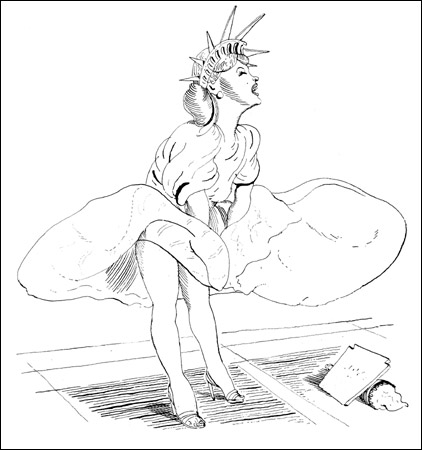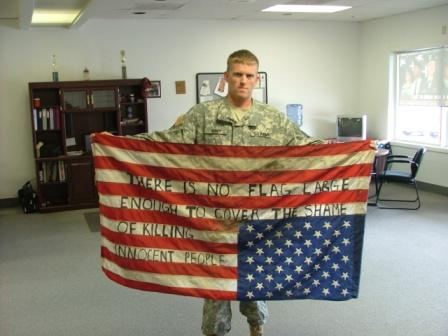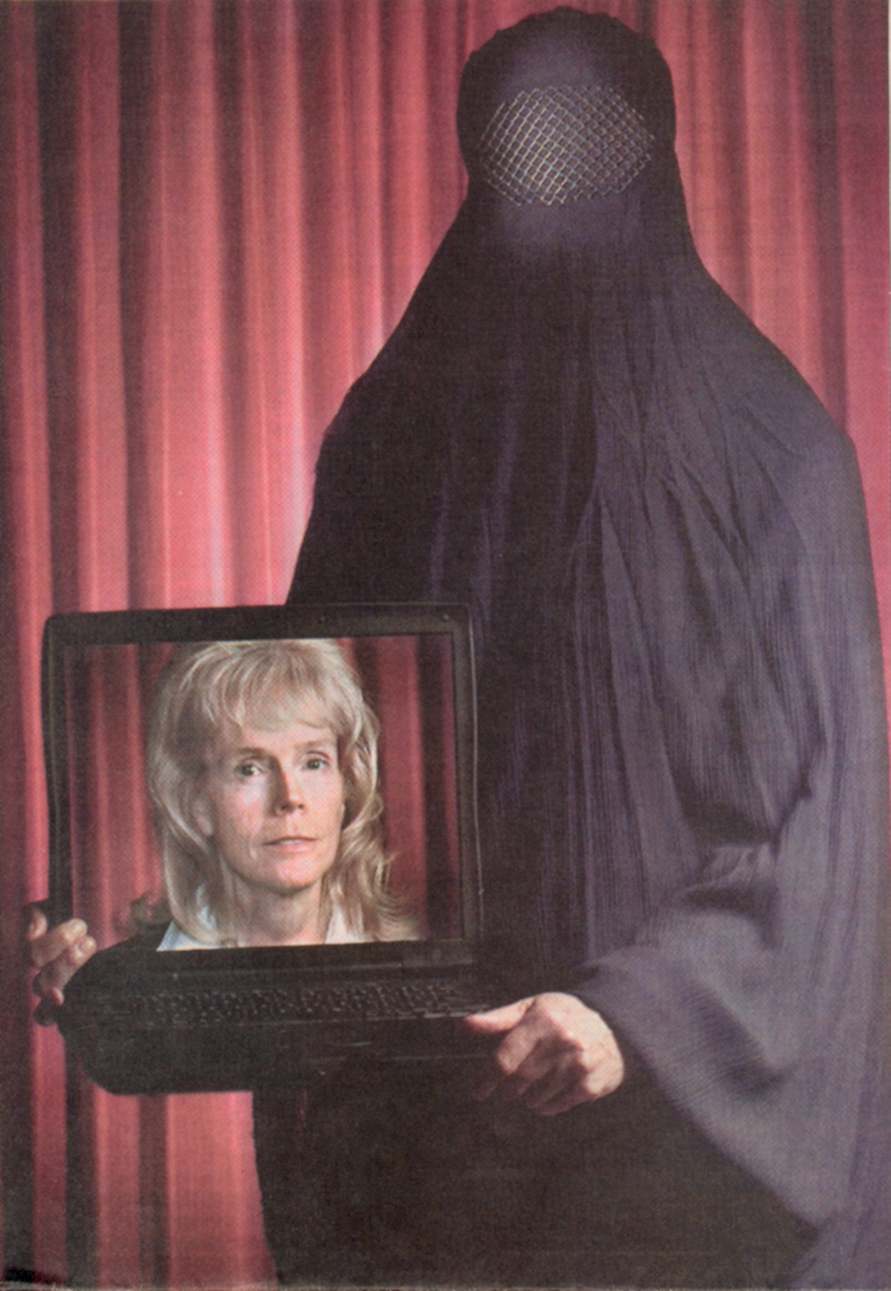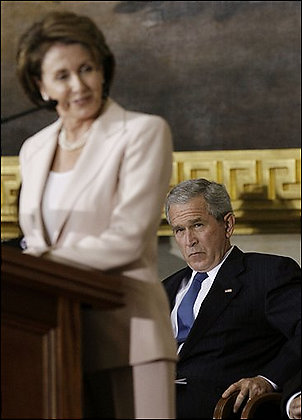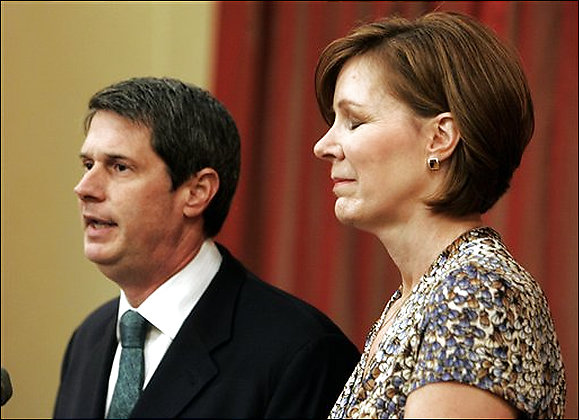Although photography has almost completely displaced illustration as the visual art of print journalism, some newspapers still use drawings regularly. The New York Times is particularly inventive in that regard (as well as with graphic art, but that’s another topic). The Sunday Times featured a terrific drawing that dominated the space above the fold for Frank Rich’s weekly essay on political culture.
Rich was remarking on “the G.O.P.’s overdue summer of love,” whereby the Party was caught between the David Vitter prostitution scandal and having a twice-divorced adulterer as the front runner for the presidential nomination. Gloating aside, Rich’s main point is that the electorate may be moving beyond Family Values prudery. The illustrator got that idea big time. The drawing fuses two iconic images: Marilyn Monroe’s publicity shot for The Seven Year Itch, and the Statue of Liberty. If the image seems incongruous or naughty, that shouldn’t be surprising. Whether you see Lady Liberty enjoying the not rush of air up her thighs, or Marilyn donning a the civic crown as part of her erotic playfulness, these are not attitudes that are likely to be taught to home schoolers. (Pedantic aside: “prurient,” meaning lascivious or lustful, is derived from the Latin word for itch.) That transgressiveness is reinforced by the formal hybridity of the image: the icons in question began as photograph and a statue (neither of which is an illustration); they became icons of celebrity culture and civic culture; they reflect 19th century civic republican art and 20th century image making.
The drawing may be go farther than Rich would like. He is suggesting that the electorate is coming to its senses, not in the sense of having its own summer of love, but rather in becoming prudent rather than moralistic about the relationship between private life and public policy. The drawing, however, suggests that when the private passions and civic ideals go public together, the result is much more a matter of desire than restraint. Or perhaps I’m being moralistic. In any case, this is a great example of how illustrators still can play an provocative role in the visual public sphere.
Illustration by Barry Blitt for the New York Times, The Week in Review, July 22, 2007. (NB: Blitt already has a place in the history of iconic images, as he created the New Yorker cover that depicted two male sailors kissing in the manner of the iconic photograph of a sailor and a nurse clenched in Times Square on VJ Day. You can see the cover here (scroll down). If you have a copy of No Caption Needed, it’s on page 79.)
